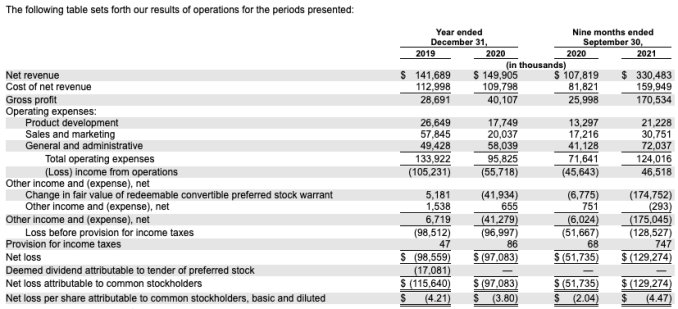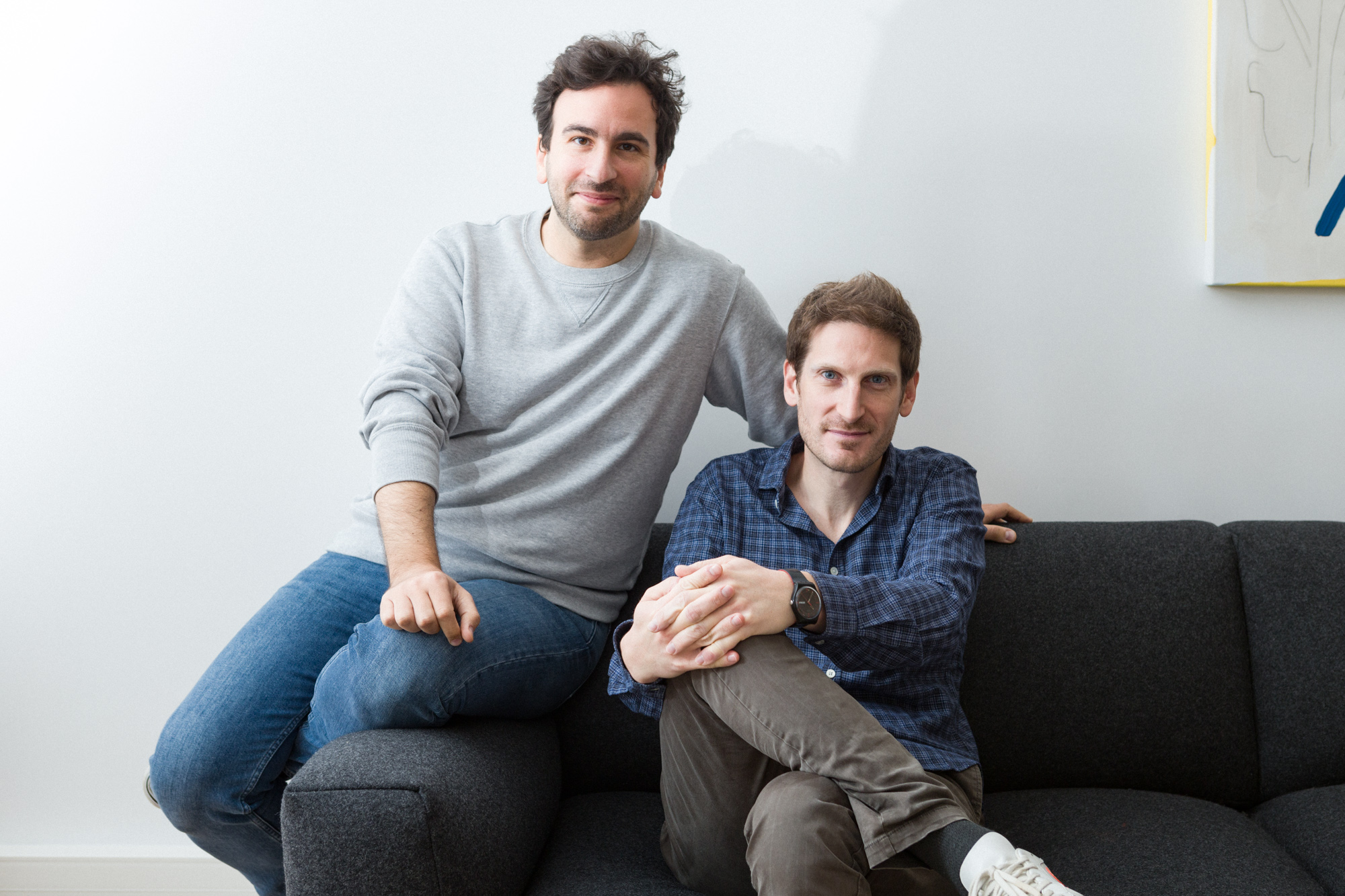Twig, a London-based fintech targeting Gen Z and younger Millennial consumers with an e-money account that gives them instant cash-outs on fashion and electronics they want to sell, has closed a $35 million Series A round of funding.
The investment is led by UK-based fintech specialist, Fasanara Capital, with additional backing from a number of undisclosed strategic investors which Twig says include current and former executives from LVMH, Valentino and Goldman Sachs, among others.
The startup was only founded in mid 2020 — launching its service in the UK last July — but it touts rapid domestic growth (100,000+ monthly downloads of its apps; reaching sixth position in the iOS App Store’s top finance apps); and is already gearing up for international expansion.
The Series A is pegged for launching in the US (slated for Q1 this year) and the EU (Q2; where it’s eyeing Italy, France and Germany for starters), as well as expanding the product’s capabilities and feature-set with a focus on the buzz around Web3 and digital collectables.
For now, Twig accounts are only available in the UK. Founder and CEO Geri Cupi tells TechCrunch it has around 250,000 users at this stage.
He adds that the typical user is a 22-year-old, recently graduated professional female — perhaps with a bunch of stuff in her wardrobe that she’s outgrown and would be happy to resell.
Growth via user referrals looks likely to have helped fuel its early rise, given Twig charges users a £1 transfer fee for users to send money to a third party account but there’s no fee if you transfer from one Twig account to another.
It’s also worth noting that despite having a marketing slogan which paints itself as “your bank of things”, Twig is not actually a bank; rather a Twig account is an “e-money account” — so there are key regulatory differences (such as Twig accounts not being covered by the UK’s deposit guarantee scheme).
Not being a full fat bank means the startup can scale faster into new markets, with lighter regulatory requirements on the service than if it needed to obtain a banking licence. For now it’s not in a hurry to turn into an actual bank, per Cupi.
In earlier decades, long before the Internet- and open banking-fuelled fintech boom, legacy banks would pitch to get a new crop of school leavers signed up by offering freebies — like bags, stationery, music or other offers. Now fintech startups compete to offer the most appealing feature mix to net a target youth demographic.
But it’s fair to say that getting money into accounts remains a key aim.
That said, Twig is applying for B Corp certification which emphasizes social purpose and environmental performance, as well as transparency and accountability — Cupi says it’s in the final stage of the application; it has pending status currently and he anticipates getting full status in Q1 — while its PR pushes claims of sustainability and circularity, given that it’s plugging users into selling (rather than binning) their branded goods.
Its website also talks up its use of carbon offsetting and other initiatives to shrink environmental impact.
Thing is, in order for humanity to avert climate catastrophe, major reductions in global CO2 emissions are required — so, essentially, less consumption overall. Which does call into question the credibility of claims of ‘sustainability’ being made to stretch around a concept of resale that risks fuelling increased consumption via instant valuations and cash outs, as Twig offers.
Selling a currently owned thing to free up cash might encourage the consumer to splash out and buy more new things than they otherwise would if they had held onto the original item for longer. Or, to put it another way, circularity needs to work hand in hand with longevity if it’s to shrink consumption and actually reduce CO2 emissions. And it’s not clear that reducing friction involved in reselling will lead to consumers buying less overall. On the contrary; it may do the opposite.
So that’s one potential wrinkle in Twig’s sustainability pitch.
However when we put this conundrum to Cupi he neatly irons it out — deploying a (somewhat circular) argument which states that Twig’s goal of increasing “liquidity” of secondhand things can work for sustainability and support reduced consumption by making more secondhand stuff available to buy — thereby reducing demand for new stuff to be made as more items (re)circulate through this (more vibrant) secondary economy.
“Essentially our core business is we enable consumers to get paid for their old items and in the process we give a new life to their items — and this increases supply in the secondary market at least,” he says. “The demand in the secondary market has been growing and growing. The reason we can afford just to be on the supply side of the market is there is such a bigger need for extra supply right now in the market. And when consumers get hat extra cash it doesn’t mean they’re going to use it to buy more things.
“This is from what we’ve seen from our users. Typically from the funds that are being transferred to Twig we see that roughly 42% of them get used for new experiences — that might be travelling, it might be… experience-led — so it doesn’t mean that if you increase liquidity you necessarily increase consumerization of things that have a negative impact on the environment. And that’s what we’ve been seeing so far.”
Cupi condenses Twig’s business to a very simple pitch: “We tokenize assets.”
“The way Twig works is you can upload — let’s say a Gucci Marmont handbag — on the platform. And what Twig does is it tokenizes that asset and offers you a price for it,” he explains.
“Our goal is to make this available externally as well. In that scenario blockchain becomes useful… We want to increase the liquidity of this asset and make it very easy for consumers to trade the physical goods for virtual goods and use the virtual goods to buy physical goods or experiences.
“So we just want to make it much easier for them to trade, essentially.”
Cupi has a background in blockchain and the circular economy — which has included, back in 2018, selling a denim upcycling business to Levi’s Albania.
Physical items that resell well include fashion from brands like Nike, Gucci, Chanel, Hermes and other luxury makers, according to a Twig white paper — which talks about “redefining the future of ownership” and “empowering Gen Z to live a circular lifestyle”.
Apple electronics also hold their value well on the secondhand market, per Cupi — who notes that after Twig added electronics to the secondhand items it’ll buy, expanding out from buying fashion cast offs, its demographic shifted from over 90% female to around 70:30 female to male.
Twig takes care of the resale of pre-owned items for its users — providing them with an instant valuation and (potentially) instant cash to spend on whatever they like if it’s happy to buy the stuff they’re selling. (It has a pretty specific list of what it will and won’t buy.)
Shipping the goods to Twig is free for the user — so by using its service they essentially skip the hassle and risk associated with manually selling their stuff on a second hand marketplace like Vinted or Depop. (Albeit, they may get less than if they sold the items themselves.)
If an item fails a quality check once it arrives at Twig’s warehouse the user is charged a fee to return it to them (and presumably any instant payment they got for it is also reversed). While if Twig ends up being unable to sell an item it says it donates the goods to charity rather than binning them to avoid sending stuff to landfill because that’s bad for the environment.
Cupi says it’s in a growth-focused phase at present so is not seeking to make chunky margin on resales.
The value it’ll offer for an item varies, depending on various dynamic factors — its white paper notes that it uses a “market-based pricing algorithm” to analyze 100M+ products on the secondary market to provide “representative resale values for brands, item categories and market segments”.
Core to its premise is that factoring in resale value changes the concept of total cost of ownership for the consumer — which may have the power to shift buying patterns (it could, for example, encourage consumers to opt for high end fashion to get value longevity over environmentally ruinous and low resale value fast fashion, say).
Combining bank-like functionality — Twig accounts come with a Twig Visa debit card and include capabilities like the ability to make domestic and international money transfers — with a baked in secondhand goods resale service is a pitch tailor-made for the target Gen Z and younger Millennial demographic which has shown a keen and growing interest in both the thrift and sustainability of secondhand marketplaces.
Twig’s target demographic also explains its marketing being heavy on talk of environmental friendliness via circularity. (“Twig makes it easier and empowers you to adopt a more sustainable lifestyle,” is one claim on its retro-graphic-heavy website.)
Gen Z especially has been dubbed the sustainability generation — with these young consumers prioritizing “usage of goods over ownership”, as Twig’s white paper puts it.
So reimagining the function of a bank as an arbiter and exchange of resale value — enabling consumers to turn all sorts of stuff into, essentially, quasi-currency to pay for other things they want to have or do (a sort of high tech reinvention of barter if you like) — rather than as a literal store of financial value starts to look pretty interesting.
There’s another sustainability wrinkle to tackle, though — given how thoroughly blockchain is baked into what Twig’s doing.
While its tech has been built on blockchain from the start you’d be hard pressed to notice from the user-facing descriptions on its website. But its plan for the Series A risks throwing its Gen Z-friendly eco-sounding marketing right out of whack — as its PR seeks to tap into the raging Web3 hype, with the launch of what it describes as “a first-of-its-kind Web 3.0 green payment infrastructure”.
This forthcoming functionality will enable users to “tokenize” real world assets and “make them tradeable in seconds”, its release goes on, adding that: “Twig will enable digital and physical items to be monetized and traded in new ways. Such an approach will allow users to trade-in goods at the checkout page and buy crypto currencies as well as NFTs by trading-in their clothes or electronics.”
Quite how encouraging the trading of crypto and NFTs can be spun as “green” is an interesting question to ponder.
After all the energy costs of crypto can look like an extinction level event, in and of themselves.
For example, a study last year by Cambridge University suggested that just one cryptocurrency — Bitcoin — consumed more energy annually than the entire country of Argentina.
Another piece of research, from March last year, suggested Bitcoin consumed as much energy as Norway — with predictions that its carbon footprint would soon be akin to the emissions generated by the entire metropolitan area of London.
In short, the infamous inefficiency of blockchain-based cryptocurrencies — certainly those that require proof of work to validate transactions — looks anything but sustainable.
There’s even more wasteful energy usage being attached to blockchains too: Aka the rise of NFTs (non-fungible tokens) which involve — and further encourage — the use of energy-intensive transactions by layering the trading of digital collectables atop blockchains.
The current hype around NFTs (as fashion/status symbols) combined with the retail trading of these digital assets — and the suggestion that hyper quick money can be made by burning energy to shift collectable pixels — pours yet more fuel on this energy bonfire.
Last year an analysis by a digital artist suggested that an average NFT could have a carbon footprint equivalent to a month’s worth of electricity usage for a person living in the EU. So, again, it’s hard to conceive of a way to spin features that encourage users to get busy tokenizing and trading their stuff — and/or digital collectables — as, in any shape or form, “green”.
Once again, Cupi is not phased by this counter argument, though.
Firstly he says that the blockchain infrastructure Twig has been built on is more energy efficient than some other blockchains.
“Blockchain itself is not bad for the environment as a technology — there’s different applications of it,” he argues. “In our case the blockchain that we built on top of — it’s Hyperledger Sawtooth — the energy usage is very, very small compared to the other solutions out there.
“So we try to minimize the usage of energy intensive solutions.”
He also specifies that Twig is calculating its internal energy usage to try to quantify its environmental impact and — at a minimum — it’s doing carbon offsetting to counteract this.
He says it is also supporting projects that are seeking to sequester/remove CO2 from the atmosphere.
Although how viable/credible the specific projects are is a whole other matter.
While Twig may be seeking to minimize/offset its own energy usage/carbon footprint, the bigger potential environmental impact is likely to be from secondary (for want of a better word) usage — aka, any consumption, energy use and CO2 emissions that Twig’s users and suppliers generate as a result of what its platform enables them to do.
Calculating those linked but indirect impacts — sometimes called ‘Scope 3′ emissions, in sustainability reporting terms — is much harder than doing an internal audit of a business’ direct energy usage. Yet Scope 3 emissions also tend to comprise the biggest chunk of an organization’s carbon footprint. So you can’t just wish all those connected transactions, emissions and effects away.
Twig is clearly trying to tackle some of this — by doing carbon offsetting to cover the shipping of goods, for example. And its ambition to gain B Corp status looks laudable.
But it’s a lot harder to predict what sort of energy costs its platform may ultimately end up generating — based on the consumer demands and trends it might feed and/or drain.
By encouraging users to buy crypto and get into trading NFTs it’s clear there will be associated energy costs. And there is a risk that such intensive energy costs could end up erasing potential environmental gains (if Twig is able to turn increased liquidity of secondhand goods into a net reduction in manufacturing of new items via reduced demand from consumers to buy new).
But it’s also possible that such a radical reimagining of what can be used to make a payment — all sorts of items/things/stuff; in theory a consumer may not need to ever spend actual money in a world of tokenized value — could lead to substantial shifts in consumption that can actually move the needle on circularity. And move our societies away from the vicious circle of throwaway consumption that’s characterized so many decades of capitalism.
Put another way, if the things we have can be relied upon to more predictably sustain their value for resale — thanks to the help of blockchain-based tokenization (which can support authentication to combat fakes) and more stable valuations (based on knowing the full ownership history via a distributed ledger infrastructure) — consumers may be nudged to take better care of the stuff they have in order to preserve its longevity for better resale, meaning the world’s industries won’t need to make half so many things in the first place — lifting crippling systemic pressure on planetary resources.
It’s certainly a thought.
De-emphasizing money by making it much easier to make payments by exchanging all sorts of things might be exactly the kicker we need to rework how we think about value, ownership and wealth. And, indeed, planetary resources.
Here’s Cupi again: “Instead of using your own cash to buy NFTs you can use things that you have at home and don’t use anymore — for instance you might have an old iPhone that you don’t use anymore and you can trade that for an NFT or you can trade that for some cryptocurrency or you can use that to buy an experience — you can use that to buy a trip to New York or you can use that to pay for your next vocational course… So the whole purpose of Twig is to increase liquidity in the market and — essentially — to make it very easy for people to use assets that they don’t use anymore and give them a second life.
“That way our ethos is you can both do good to your wallet and to the Earth.”
The vision for Twig is therefore to turn itself into a payments platform — but one that translates physical goods into payments on behalf of its users/customers.
“At the moment Twig is just a b2c platform — but it’s going to become a b2b2c platform. So it will be connected as a payment gateway of different providers,” he says, noting that it has inked agreements with “a couple of big merchants” to be plugged into its infrastructure (he’s not disclosing which retailers as yet).
“What we’re trying to do — essentially — is to reinvent the definition of wealth,” Cupi adds, discussing how he sees the notion of money evolving. “So if everything that you own can be treated as money your perception of wealth also changes.
“The old definition of wealth is the value of your largest asset — the value of your house, the value of your car… But you don’t see as part of your wealth — typically — the value of your wardrobe, for instance. This is what we’re trying to change. And in that way if everything has instant liquidity you can treat your things as cash. It doesn’t make a difference whether it’s cash — or a Gucci Marmont handbag. If you want to buy something in pounds it’s then the same.”
So if Twig gets its way the future of payments might get a whole lot more visual and physical — maybe you’ll be buying a secondhand iPhone by dragging and dropping an NFT you minted into the ecommerce payment window.
Or posting off a pair of limited edition Nikes to score that sweet Spring city break you’ve been looking forward to.
Or, er, buying a chunk of prime real estate with some prize pieces of diamond-encrusted jewellery…
While younger consumers may already be comfortable with a world of fairly commoditized value tradable stuff, what about older consumers? Does Cupi reckon Boomers or Gen X can be convinced to start making payments by parting with things they’ve ploughed their cash into?
Are first edition signed books and prize vinyl pressings going to end up folded into the future payment mix?
“To be honest I don’t know the answer to that,” he says. “At the moment we’re seeing our product, Gen Z reacts very well to it. And also young Millennials — so twentysomethings… that’s what we’re seeing — and in the UK. It might be a different picture once we go to other markets as well.”






